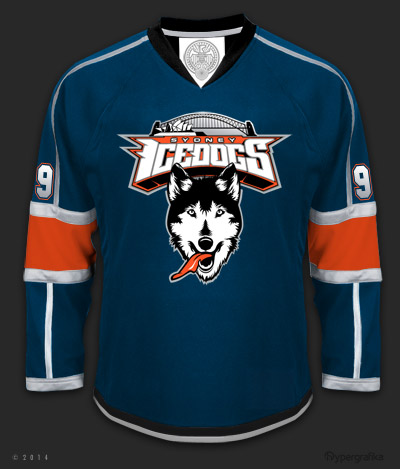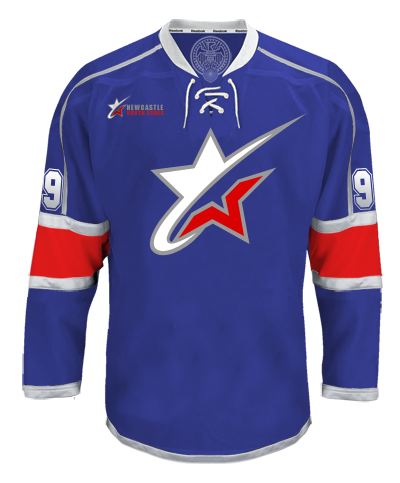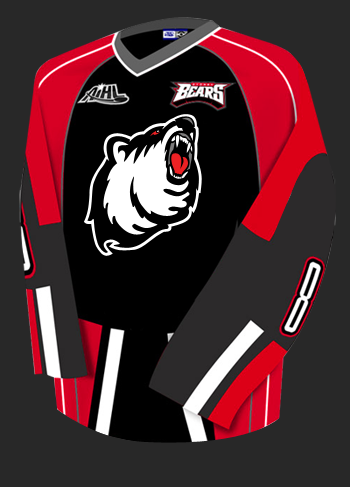Legends
home
From a desert, from the driest continent, from this land at the opposite end of the globe ...
... as remote as could be in the hockey world ...
... came one of the world’s oldest winter sports trophies.
A cool tradition, a dream of champions, and a story we owe it to our children to tell.
Legends of Australian Ice.
[ DESIGN ] The Good Thing About Bad Taste
is that you don't know you have it | May 2014
"The departure of the last remaining huskies from Antarctica marks the end of an era... It will always be difficult for those who have not shared the experience to understand the pure delight of driving behind dogs and being utterly dependent on them for life itself..."
— HRH Prince Charles

Image right: concept jersey, Sydney Bears IHC, HYPERGRAFIKA, 2014
Unfortunately, there are no polar bears in Australian Antarctica. The original logo design for this competition entry for a new Sydney Bears jersey back in 2011 was based on the Australian Drop Bear, rather than a non-Australian bear.
The Drop Bear, Thylarctos plummetus, is a large, arboreal, predatory marsupial related to the Koala. This ominous cryptozoological creature is much like, for example, the Jersey Devil that inhabits the Pine Barrens of South Jersey. That legend became the branding idea for the NHL New Jersey Devils. We were kinda attached to the ferocious native Drop Bear as the Sydney Bears fighting symbol, but at least half of the Bears rulers were not. In fact, the more ferocious the design got, the more teeth the drop bear grew, the more polarised the Bears rulers became until, eventually, they just printed their old logo on our jersey design. You see, it transpired they had their hearts set on a "nobler" version of the Charlotte Checkers logo.
Oh well. Here is our bear remix, three years on. We are in a Sydney state of mind.

Image left: concept jersey, Sydney Ice Dogs IHC, HYPERGRAFIKA, 2014
Dogs were once an integral part of life in Australian Antarctica; usually Huskies brought from Greenland or other places in the Arctic since the earliest days of Antarctic exploration. The first were used for transport during the Southern Cross expedition under Carsten Borchgrevink, 1898 -1900. The dogs pulled sledges before reliable mechanized transportation arrived, and that was much later in Antarctica than in the rest of the world.
Dog teams were used as the reliable transportation of choice by many nations, certainly through to the 1960s and well into the 1970s. They were retained in many places much later than that as a back-up to mechanized transport or for "recreational" purposes. Many generations of Antarctic personnel on scientific bases regarded their experiences in Antarctica as being greatly enhanced by the presence of the dogs and the possibility of sledging trips with them.
In 1991 however, a bureaucratic fear that distemper from dogs could spread to seals led to a new clause in the Antarctic Treaty: "Dogs shall not be introduced onto land or ice shelves and dogs currently in those areas shall be removed by April 1 1994". The last dogs were removed from Antarctica to Quebec on Feb 22nd 1994.

Image left: concept jersey, Newcastle North Stars IHC, HYPERGRAFIKA, 2014
The North Star or Pole Star is the brightest superstar of the Polaris system. There is not much more to say, except that it is not visible from Australia and there is no South Star counterpart. We use Crux (the Southern Cross). "North Stars" as a team name does not drip Antipodean significance and it is equally insignificant as a euphemism for hockey stars from the north. You can't help but wonder!
The Stars jersey design has always been in the European tradition, absolute zero bare patches of unsponsored fabric. That can be done well, but sometimes less really is more.
Newcastle has links to Australian ice hockey stretching all the way back to 1911. Canadian expat Jim Kendall lived and worked there for many years, regularly commuting by train for practice and games at Sydney Glaciarium. He was Chief Engineer of BHP based at their Newcastle steelworks. The steel mill played a big part in shaping the community there for the 84 years between 1915 and 1999.
That history is so cool, perfect inspiration for branding a hockey team. We can't begin to imagine why it hasn't happened!
